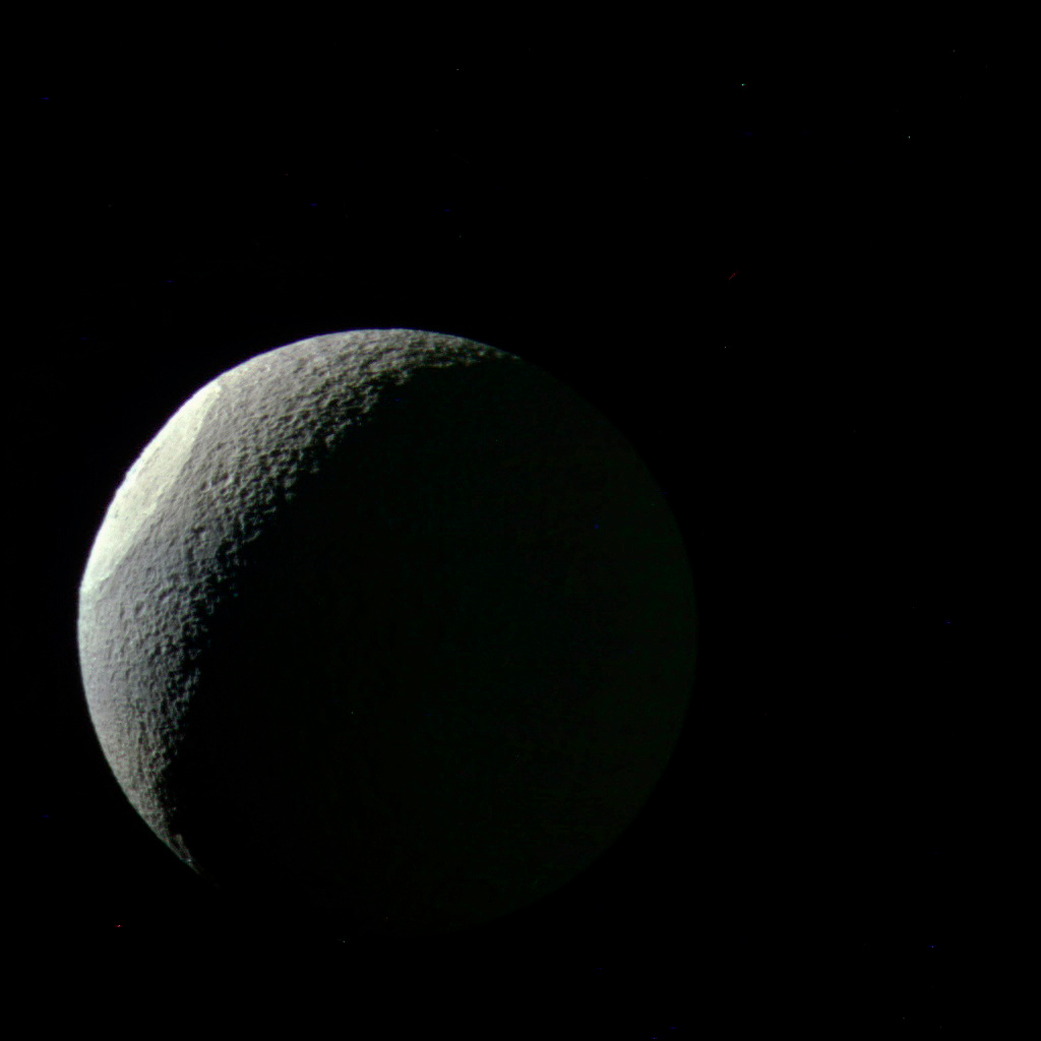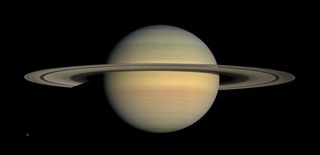
A huge impact crater shines brightly on Saturn's icy moon Tethys in a gorgeous new photo taken by NASA's Cassini spacecraft.
The image highlights an impact basin on Tethys called Odysseus, which, at 280 miles (450 kilometers) across, is nearly half as wide as the Saturn moon itself. (The diameter of Tethys is about 660 miles, or 1,062 km).
The photo shows that Odysseus is considerably brighter than the surrounding landscape.
"This distinct coloration may result from differences in either the composition or structure of the terrain exposed by the giant impact," NASA officials wrote in a description of the image, which was released today (July 27).
Odysseus "is one of the largest impact craters on Saturn's icy moons, and may have significantly altered the geologic history of Tethys," NASA officials added.
Cassini captured the image on May 9, when it was about 186,000 miles (300,000 km) from Tethys. The photo's resolution is about 1.1 miles (1.8 km) per pixel, NASA officials said.
Tethys is the fifth-largest of Saturn's 62 known moons; only Titan, Rhea, Iapetus and Dione are bigger. Tethys, which is composed primarily of water ice, was discovered by the Cassini mission's namesake, Italian astronomer and mathematician Giovanni Domenico Cassini, in 1684.
Get the Space.com Newsletter
Breaking space news, the latest updates on rocket launches, skywatching events and more!
Odysseus isn't the only outsize feature on Tethys; the satellite also features a 1,240-mile-long (2,000 km) canyon called Ithaca Chasma that's 62 miles (100 km) wide in places.

The $3.2 billion Cassini-Huygens mission — a collaboration involving NASA, the European Space Agency and the Italian Space Agency — launched in 1997 and arrived in the Saturn system in 2004. In January 2005, the mission's Huygens lander touched down on the surface of Titan, the ringed planet's largest moon.
Cassini will continue circling Saturn and studying the gas giant and its many moons until September 2017. The spacecraft will then end its mission with a bang, performing an intentional death dive into Saturn's thick atmosphere.
Follow Mike Wall on Twitter @michaeldwall and Google+. Follow us @Spacedotcom, Facebook or Google+. Originally published on Space.com.
Join our Space Forums to keep talking space on the latest missions, night sky and more! And if you have a news tip, correction or comment, let us know at: community@space.com.

Michael Wall is a Senior Space Writer with Space.com and joined the team in 2010. He primarily covers exoplanets, spaceflight and military space, but has been known to dabble in the space art beat. His book about the search for alien life, "Out There," was published on Nov. 13, 2018. Before becoming a science writer, Michael worked as a herpetologist and wildlife biologist. He has a Ph.D. in evolutionary biology from the University of Sydney, Australia, a bachelor's degree from the University of Arizona, and a graduate certificate in science writing from the University of California, Santa Cruz. To find out what his latest project is, you can follow Michael on Twitter.











